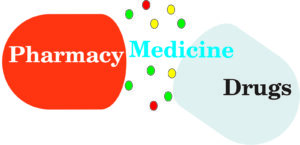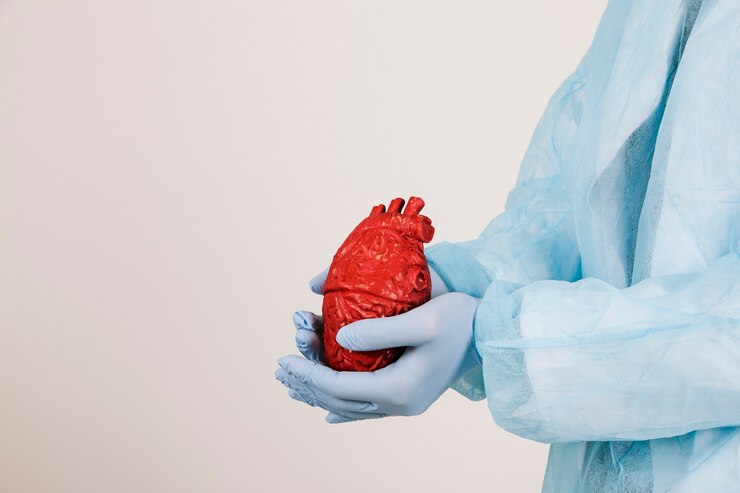Cardiac Output | What is Cardiac Output And Its Measurement OR Calculation?
Cardiac output (CO) is the volume of blood being pumped by the heart in one minute. The equation used to find cardiac output measurement or calculate cardiac output
Cardiac Output Measurement :
cardiac output measurement or calculations varies from person to person and gender and age might also be a reason
Stroke volume is the amount of blood pumped into the aorta during each ventricular systole, usually measured in milliliters. Heart rate is the number of heart beats per minute. The average heart can push around 5 to 5.5 liters per minute at rest. In closed circulatory system, blood is circulated through closed vessels such as arteries, veins and capillaries.
Arteries: The blood vessels which carry blood from the heart to various body organs are called arteries. All arteries carry oxygenated blood, except pulmonary artery, which carries deoxygenated blood.
Veins: The vessels which carry blood from various body organs to the heart are
known as veins. All veins carry deoxygenated blood except pulmonary vein, which carries oxygenated blood.
Capillaries: Capillaries are the most common, smallest and thinnest of the blood
vessels in the body. They can be found running throughout almost every tissue of
the body and border the edges of the body’s vascular tissues. Capillaries connect to arterioles on one end and venules on the other. Capillaries carry blood very close to the cells of the tissues of the body in order to exchange gases, nutrients, and waste products. The walls of capillaries consist of only a thin layer of endothelium, acts as a filter to keep blood cells inside of the vessels while allowing liquids, dissolved gases, and other chemicals to diffuse along their concentration gradients into or out of tissues.
Cardiac Output FAQ
A healthy heart with a normal cardiac output pumps about 5 to 6 liters of blood every minute when a person is resting. During exercise, your body may need three or four times your normal cardiac output, because your muscles need more oxygen when you exert yourself. During exercise, your heart typically beats faster so that more blood gets out into your body.
Exercising will increase cardiac output . During exercise, your heart typically beats faster so that more blood rich with oxygen gets pumped in and gets out into your body.
Cardiac output (CO) is the volume of blood being pumped by the heart in one minute. The equation used to find cardiac output is:
CO = Stroke Volume × Heart Rate
Cardiac output (CO) is the volume of blood being pumped by the heart in one minute. The equation used to find cardiac output is:
CO = Stroke Volume × Heart Rate
Stroke volume is the amount of blood pumped into the aorta during each ventricular systole, usually measured in millilitres. Heart rate is the number of heart beats per minute. The average heart can push around 5 to 5.5 litres per minute at rest.
- •To Purify Deoxygenated blood to Pure Oxygen Rich Blood
- • To Pump And Supply Fresh Blood to Tissues And Organs
- • Clotting of Open Wounds.
- •Regulation of Body Temperature
- • Hormone Delivery.
- •Supply Body With Oxygen and Nutrients.
- •To Purify Deoxygenated blood to Pure Oxygen Rich Blood
- • To Pump And Supply Fresh Blood to Tissues And Organs
- • Clotting of Open Wounds.
- •Regulation of Body Temperature
- • Hormone Delivery.
- •Supply Body With Oxygen and Nutrients.
Functions of Cardiovascular System
The cardiovascular system has three major functions: transportation, protection
and regulation of the body’s homeostasis.The cardiovascular system transports blood to almost all of the body’s tissues. The blood delivers essential nutrients and oxygen and removes wastes and carbon dioxide to be processed or removed from the body. Hormones are The cardiovascular system has three major functions: transportation, protection and regulation of the body’s homeostasis.
Transportation: The cardiovascular system transports blood to almost all of the body’s tissues. The blood delivers essential nutrients and oxygen and removes wastes and carbon dioxide to be processed or removed from the body. Hormones are transported throughout the body via the blood’s liquid plasma.
Regulation: The cardiovascular system is instrumental in the body’s ability to maintain homeostatic control of several internal conditions. Blood vessels help maintain a stable body temperature by controlling the blood flow to the surface of the skin. Blood vessels near the skin’s surface open during times of overheating to allow hot blood to
dump its heat into the body’s surroundings. In the case of hypothermia, these blood vessels constrict to keep blood flowing only to vital organs in the body’s core. Blood also helps to balance the body’s pH due to the presence of bicarbonate ions, which act as a buffer solution. Finally, the albumins in blood plasma help to balance the osmotic concentration of the body’s cells by maintaining an isotonic environment.
The Circulatory Pump: The heart is a four-chambered “double pump”, where each side (left and right) operates as a separate pump. The left and right sides of the heart are separated by a muscular wall of tissue known as the septum of the heart. The right side of the heart receives deoxygenated blood from the systemic veins and pumps it to the lungs for oxygenation. The left side of the heart receives oxygenated blood from the lungs and pumps it through the systemic arteries to the tissues of the body. Each heartbeat results in the simultaneous pumping of both sides of the heart, making the heart a very efficient pump.
Regulation of Blood Pressure: Several functions of the cardiovascular system can control blood pressure. Certain hormones along with autonomic nerve signals from the brain affect the rate and strength of heart contractions. Greater contractile force and heart rate lead to an increase in blood pressure. Blood vessels can also affect blood pressure. Vasoconstriction decreases the diameter of an artery by contracting the smooth muscle in the arterial wall. The sympathetic (fight or flight) division of the autonomic nervous system causes vasoconstriction, which leads to increase in blood pressure and decrease in blood flow in the constricted region.
Vasodilatation is the expansion of an artery as the smooth muscle in the arterial wall relaxes after the fight-or-flight response wears off or under the effect of certain hormones or chemicals in the blood. The volume of blood in the body also affects blood pressure. A higher volume of blood in the body raises blood pressure by increasing the amount of blood pumped by each heartbeat. Thicker, more viscous blood from clotting disorders can also raise blood pressure.
Read More :Blood Flow Through the Heart | Electrocardiogram | Heart Sounds
Conduction System of the Heart | Anatomy of the heart

